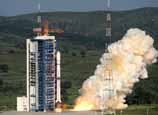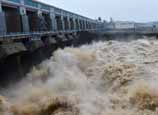
JINAN, July 21 (Xinhua) -- Recent data suggest that China's first "blue economy" zone in east China's Shandong Province has become a new engine for growth -- and one that grew faster than the entire provincial GDP in the first quarter.
The sector recorded a growth rate of 10.2 percent in the first quarter, exceeding the provincial average by 0.5 percent. Its total output last year hit 2.4 trillion yuan (about 391 billion U.S. dollars), accounting for one-fifth of the nation's total marine output, according to statistics from the Shandong Development and Reform Commission (SDRC).
Zhang Wufeng, director of the SDRC, said the data indicates that the province has become a pioneer in the nation's maritime strategy of developing an efficient and environmentally-friendly seaside economy.
In April 2010, the State Council, China's cabinet, approved the establishment of the Shandong Peninsula Blue Economic Zone as one of three pilot zones for the development of China's marine economy.
The economic zone covers 159,500 square km of offshore waters and 64,000 square km of land in six cities and two coastal counties.
A development plan for the economic zone was approved by the State Council in early 2011 as part of China's national development strategy. According to the plan, the Shandong provincial government will coordinate the development of its land and marine economies and strengthen exploration, especially in emerging marine industries.
In just two years since the economic zone was established, the area has encountered unprecedented growth in maritime equipment manufacturing, oceanic chemicals, fishing, transport as well as tourism.
According to Zhang, marine-related companies in coastal cities like Qingdao, Yantai and Weihai are taking advantage of the plan to expand their businesses or upgrade their services.
Founded in 1998, the Yantai-based Bohai Ferry Co., Ltd., is now the nation's biggest roll-on/roll-off (RORO) transportation enterprise, and it has revitalized itself by riding the wave of the "blue economy."
The company's vice president, Zhan Li, said it has taken advantage of the significance that the plan places on the maritime shipping industry.
"The company is carrying out international cruising businesses, and a route from Yantai to Pyongtaek in the Republic of Korea is being negotiated," Zhan said.
Behind Shandong's marine industry lie technical support and innovation, which have both allowed the industry to transform and upgrade itself through the years.
Weihai-based Disha Pharmaceutical Group, a pharmaceutical enterprise with 20 years of history, has developed new biomedicines with the help of the discoveries of marine biomaterials like glucosamine and oligochitosan.
Wang Dejun, the group's CEO, said research and development of drugs and functional foods based on marine ingredients and materials are critical in propelling technological innovation and industry upgrading.
Liu Wanshun, a professor with the school of Marine Life Sciences at the Ocean University of China, said the development of marine resources has gone from traditional fishing to comprehensive utilization to the construction of a modern maritime industry.
China has abundant marine resources, with 3 million square km of offshore waters and 32,000 km of coastline.
However, the marine economy accounts for no more than 10 percent of the country's GDP, and mainly focuses on traditional industries such as fishing, transport and tourism, which together account for two-thirds of the country's total marine output.
Emerging industries, including marine-related biomedicine, power, chemicals and seawater utilization, only account for 5 percent of marine output.
















 Floodwater gushes from sluices of Gezhou Dam, China's Hubei
Floodwater gushes from sluices of Gezhou Dam, China's Hubei


![]()
